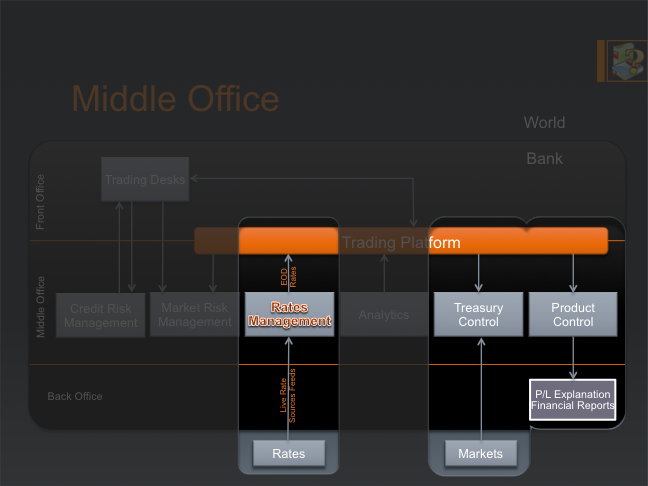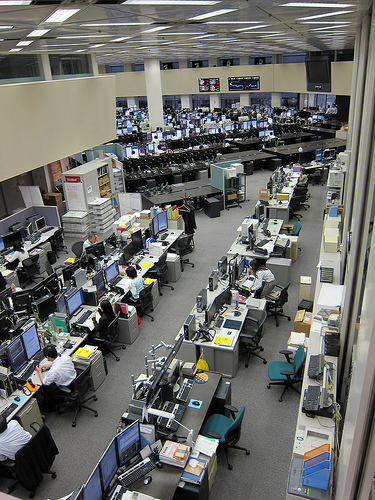- Off the Beaten Track
- Agendas
- Trading Platform
- Structure of a Bank
- Front Office
- Economists
- Sales and Structuring
- Trading Desks
- Quantitative Developers
- Middle Office
- Credit Risk Management
- Market Risk Management and Analytics
- Rates and Valuation
- Back Office, Finance et al
- Summary – Structure of a Bank
Marking trades to market requires up-to-date market data. There are two types of market data required for pricing — one is the live spot rates, volatilities, interest rates etc. This type of data is collectively called rates. The second type is the kind that goes into defining the products being traded, or the characteristics of the rates. These include definitions of interest rate pillars, bond coupon dates and rates etc. This second type is considered static data.

The rates management team is in charge of the first type data. They ensure that the live data providers are consistent with each other and that the data itself is accurate. They do this by applying various automated tests and limits to the incoming rates to flag any suspicious movement or inconsistency. Once approved by the team, the data gets consumed by the trading platform. The rates management is a critical role, and the market data is often stored and served in dedicated databases and services. Because of the technicalities involved, this team works closely with the information technology professionals.
The static data is typically managed by a separate team independent of rates management. They go by various names, Treasury Control being one of them. They set up traded products and rates pillars and so on. In some banks, they may also be responsible for trade input data validation.
Two other important functions of Middle Office are valuation and product controls. These functions are pretty far removed from quantitative development and trading platform. These teams ensure that the trade valuations and P/L movements are consistent with market movements. Valuation Control takes a close look at pricing and P/L mostly at trade level while Product Control worries about P/L explanation typically at portfolio level. Since we have the Greeks (rates of change of product prices with respect to market quantities and time), we can compute and predict the change in the prices (or P/L movements) using Taylor series expansion. If the independently computed prices (using actual market rates) are at odds with the predicted ones, it points to an internal inconsistency and should trigger a detailed investigation.
Product Control may also help Finance and Human Resource with valuation reserves process, which estimates the level of exaggeration in the profit expectations of ebullient traders. Since traders’ compensation is tied to the profit they generate, this process of assigning reserves against profit is essential in ensuring equitable performance rewards.

